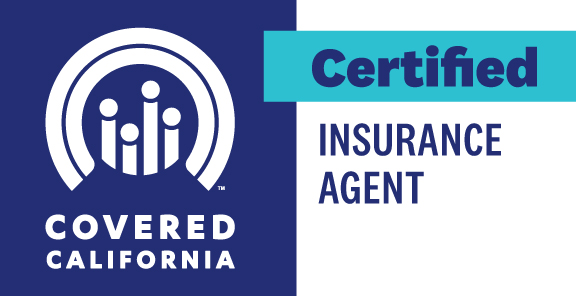Small Business Health Care income tax credit §45 R
Covered CA Certified Insurance Agent
Get Covered CA quotes and Direct Quotes too
Small Biz Health Care income tax credit §45 R
A Federal Small Biz Health Care income tax credit §45 R of 50% is available to Qualified Small employers for two years IRS FAQ’s that provide health care coverage to their employees and pay at least 50% of the employee’s premium (owners do not count)
This credit is in addition to:
- The full tax deduction of Health Premiums under Section §106, except that the credit is deducted from the premiums. IRS Q & A
- Difference between deduction & credit – Tax Policy Center.org
- Self employed & S Corp deduction and the
- Employee’s contribution under §125 POP plan!
Small Biz Tax Credits – Videos
Just Enter your census or securely send us an excel spreadsheet or a list of employees and get instant proposals
for all these companies that we are Authorized Agents for in California
Contact Us - Ask Questions - Get More Information
[email protected]
By submitting the information below , you are agreeing to be contacted by Steve Shorr a Licensed Sales Agent by email, texting or Zoom to discuss Medicare or other Insurance Plans as relevant to your inquiry. This is a solicitation for Insurance
More detail and eligibility requirements
Four Qualifications
(worksheet)
- The employer must have fewer than 25 full-time equivalent employees (“FTEs”) for the tax year,
- The average annual wages of its employees for the year must be less than $50,000 per FTE, and
- The employer must pay the premiums under a “qualifying arrangement” [Group Health Plan & Pay at least 50% of Employee Only Premium] IRS FAQ’s Notice 2010-44 Notice 2014-06 and Notice 2015-08
- The coverage must be through the SHOP (Small Biz Health Options Program) exchange – FREE Agent Support!
- Then just complete IRS Form 8941 ♦ Instructions to get the credit.
- NEW 2020 CA Flyers Tax Credit * How to get credit *
- On the other hand, my own CPA Bruce Bialosky feels that it costs more to file for the credit, than what it is worth.
Enter your CENSUS for a FREE Quote.
IRS Instructions for form 8941
Credit for Small Employer Health Insurance Premiums

- Simplified Tax Credit Instructions
- 1. You paid premiums for employee health insurance coverage under a qualifying arrangement.
- 2. You had fewer than 25 full-time equivalent employees (FTEs) for the tax year.
- 3. You paid average annual wages for the tax year of less than $54,000 per FTE.
- Employers treated as a single employer.
Understanding the Small Business Health Care Tax Credit
The Affordable Care Act includes the small business health care tax credit, which can benefit small employers who provide health coverage for their employees. The small business health care tax credit benefits employers who:
- have fewer than 25 full-time equivalent employees
- pay an average wage of less than $51,600 a year
- pay at least half of employee health insurance premiums
Here are some facts that will help you understand this tax credit and how it may affect your small business or tax-exempt organization:
- Credit percentage is 50 percent of employer-paid premiums; for tax-exempt employers, the percentage is 35 percent.
- Small employers may claim the credit for only two consecutive taxable years beginning in tax year 2014 and beyond.
- For 2015, the credit is phased out beginning when average wages equal $25,800 and is fully phased out when average wages exceed $51,600. The average wage phase out is adjusted annually for inflation.
- Generally, small employers are required to purchase a Qualified Health Plan from a Small Business Health Options Program Marketplace to be eligible to claim the credit. Transition relief from this requirement is available to certain small employers.
Small employers may still be eligible to claim the tax credit for tax years prior to 2014. Employers who were eligible to claim this credit for prior years – but did not do so – may consider if they are still eligible to amend prior year returns in order to claim the credit. Gathering the following information will assist you in completing Form 8941, Credit for Small employer Health Insurance Premiums. * Instructions
- SHOP QHP documentation or letter of eligibility from SHOP, unless transition relief applies
- Numbers of full-time and part-time employees and numbers of hours worked
- Average annual wages for employees
- Employer premiums paid per employee, if applicable
- Relevant K-1s and other pass-through credit information
- Cost of coverage for each employee
- Payroll tax liability – for tax-exempt organizations only
- Pass-through credit info – for K-1s of other small employers IRS.gov/aca. IRS Tax Tip IRS Tax Tip 2016-56
- irs.gov/health-care-tax-credit
- health care.gov/small-business-tax-credits
- health care.gov/qualify-for-shop-marketplace
- wikipedia.org/Small_Business_Health_Care_tax_credit
The Small Business Health Care Tax Credit:
Do you own a small business or run a tax-exempt organization with fewer than 25 full-time equivalent employees? If you do, the Small Business Health Care Tax Credit can help you provide insurance to your employees. You may be able to save on your taxes if you paid for at least half of their health insurance premiums. Here are seven tax tips about this credit:
- Maximum Credit. The maximum credit is 50 percent of premiums paid by small business employers. The maximum credit is 35 percent of premiums paid by small tax-exempt employers, such as charities.
- Number of Employees. You must have fewer than 25 full-time employees, or a combination of full-time and part-time employees. For example, two half-time employees equal one full-time employee for purposes of the credit.
- Average Annual Wages. For 2015, the average annual wages of your employees must have been less than $52,000. The IRS will adjust this amount for inflation each year.
- Half the Premiums. You must have paid a uniform percentage, at least 50%, of the cost of premiums for all enrolled employees.
- Qualified Health Plan. Generally, you must have purchased a qualified health plan from a Small Business Health Options Program, or SHOP, Marketplace. There are limited exceptions to this requirement.
- Two Year Limit. As of 2014, an eligible employer may claim the credit only for two consecutive taxable years.
- Tax Forms to Use. Employers use Form 8941, Credit for Small Employer Health Insurance Premiums, to calculate the credit. Small businesses employers claim the credit on the annual income tax return. Small tax-exempt employers claim it on Form 990-T, Exempt Organization Business Income Tax Return.
If you are a small business employer and the credit is more than your tax liability for the year, you can carry the unused credit back or forward to other tax years. If you are a small tax-exempt employer, the credit is refundable, so even if you have no taxable income you may receive a refund (so long as it does not exceed your income tax withholding and Medicare tax liability for the year).
2 year Limit
An employer may claim the Small Biz Tax Credit credit for no more than two-consecutive taxable years, beginning with the first taxable year in or after 2014 in which the eligible small employer attaches a Form 8941, Credit for Small Employer Health Insurance Premiums, to its income tax return, or in the case of a tax-exempt eligible small employer, attaches a Form 8941 to the Form 990-T, Exempt Organization Business Income Tax Return.
Starting in 2014, an employer may claim the credit for two-consecutive taxable years, beginning with the first taxable year in or after 2014 in which the eligible small employer attaches a Form 8941 to its income tax return, or in the case of a tax-exempt eligible small employer, attaches a Form 8941 to the Form 990-T. irs.govQuestions-and-Answers:-Who-Gets-the-Tax-Credit
(2) Credit period
The term “credit period” means, with respect to any eligible small employer, the 2-consecutive-taxable year period beginning with the 1st taxable year in which the employer (or any predecessor) offers 1 or more qualified health plans to its employees through an Exchange. law.cornell.edu/26/45R
Links & Resources
- Calculate YOUR tax credit Health Care.Gov
- Covered CA Fact Sheet IRS Website on Small Biz Tax Credit The CBO expects this credit to total $41 Billion over 10 years. CBO * USC 26 (IRS) §45 R Tax Credit
- Introduction Guidance for those employers who don’t have a SHOP plan available Notice 2018-27
- Patient Protection and Affordable Care Act IRS.Gov White House.gov on Tax Credit irs.gov/Health-Care-Tax-Credit-for-Small-Employers
- How does this credit compare to other options tax credits & mandates, like dropping group coverage and let each employee get it on their own, as everything is guaranteed issue national underwriter.com – Copyrighted – Email us your question. IR-2018-108,
- The Small Business Health Care Tax Credit can benefit certain small employers who provide health coverage to their employees. Generally, small employers must provide employees with a qualified health plan from a Small Business Health Options Program (SHOP) Marketplace to qualify for the credit.
- Also, small employers may only claim the credit for two consecutive years. In general, the relief provided today helps employers who first claim the credit for all or part of 2016 or a later taxable year for coverage offered through a SHOP Marketplace, but don’t have SHOP Marketplace plans available to offer to employees for all or part of the remainder of the credit period because the county where the employer is located has no SHOP Marketplace plans.
- The relief allows these employers to claim the credit for health insurance coverage provided outside of a SHOP Marketplace for the remainder of the credit period if that coverage would have qualified under the rules that applied before Jan. 1, 2014. Notice 2018-27 gives guidance about calculating the credit under these circumstances.
- The notice does not affect previous transition relief for the credit that was separately provided for 2014, 2015, and 2016. For information on whether a county had or has coverage available through a SHOP Marketplace, see the “Who Gets the Credit” section of the
Additional IRS & Covered CA Resources:










What happens if we hit 26 or 27 employees before year end?
The 8941 instructions state:
You had fewer than 25 full-time equivalent employees (FTEs) for the tax year. You may be able to meet this requirement even if you had 25 or more employees. For details, see Worksheets 1 and 2.
Although the term “eligible small employer” is defined in the Internal Revenue Code to include employers with “no more than” 25 FTEs, the phaseout of the credit – as you get to too many employees 45R (c) amount operates in such a way that an employer with exactly 25 FTEs is not in fact eligible for the credit.
Excluded employees.
The following individuals aren’t considered employees when you figure this credit. Hours
and wages of these employees and premiums paid for them aren’t counted when you figure your credit.
• The owner of a sole proprietorship.
• A partner in a partnership.
• A shareholder who owns (after applying the section 318 constructive ownership rules) more than 2% of an S corporation.
• A shareholder who owns (after applying the section 318 constructive ownership rules) more than 5% of the outstanding stock or stock possessing more than 5% of the total combined voting power of all stock of a corporation that isn’t an S corporation.
• A person who owns more than 5% of the capital or profits interest in any other business that isn’t a corporation.
• Family members or a member of the household who isn’t a family member but qualifies as a dependent on the individual income tax return of a person listed above. Family members include a child (or descendant of a child), a sibling or step-sibling, a parent (or ancestor of a
parent), a step-parent, a niece or nephew, an aunt or uncle, or a son-in-law, daughter-in-law, father-in-law, mother-in-law, brother-in-law, or sister-in-law. A spouse of any owner or family member listed above is also considered a family member for this purpose https://www.irs.gov/pub/irs-pdf/i8941.pdf
FTE Calculators:
HealthCare.gov